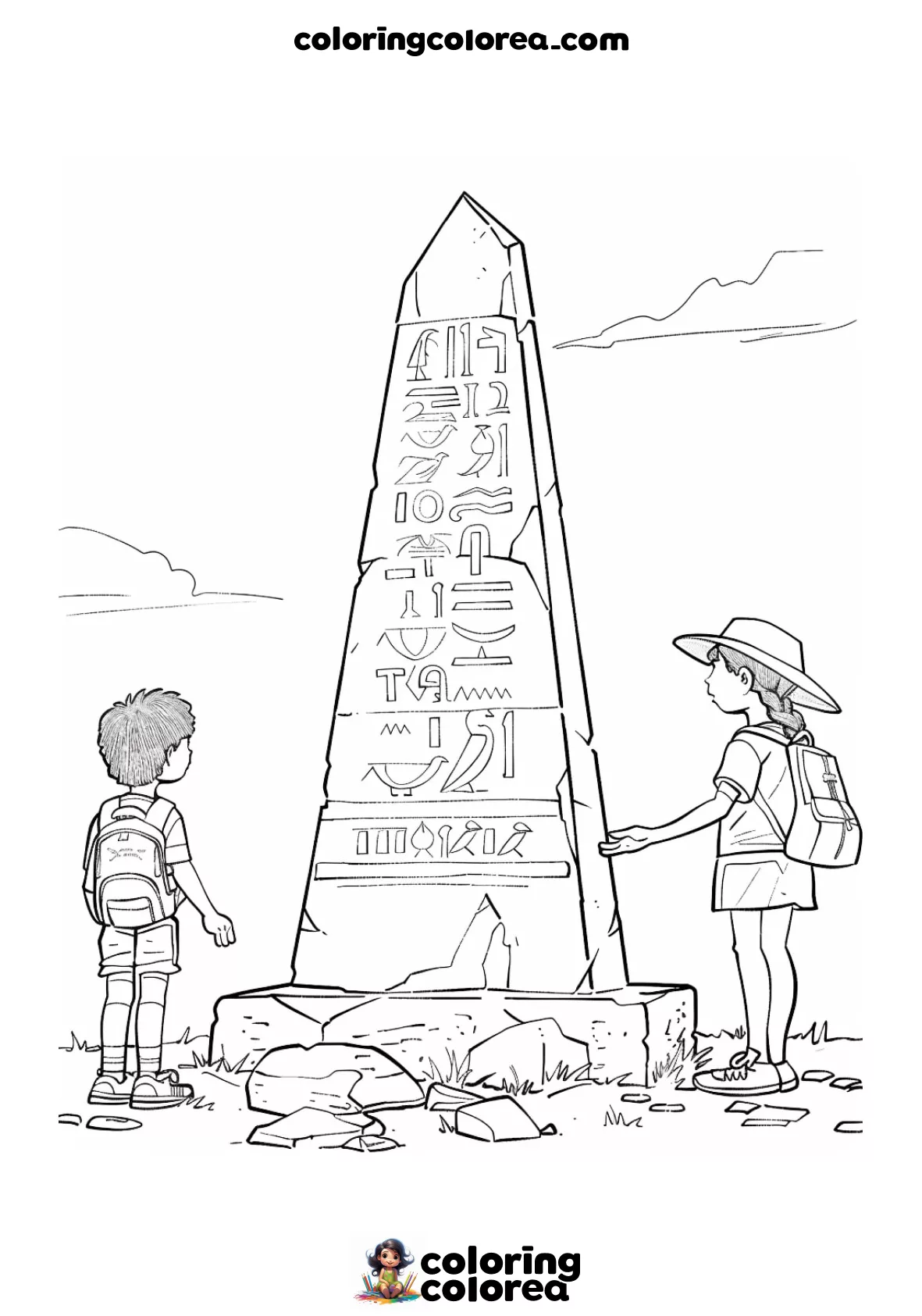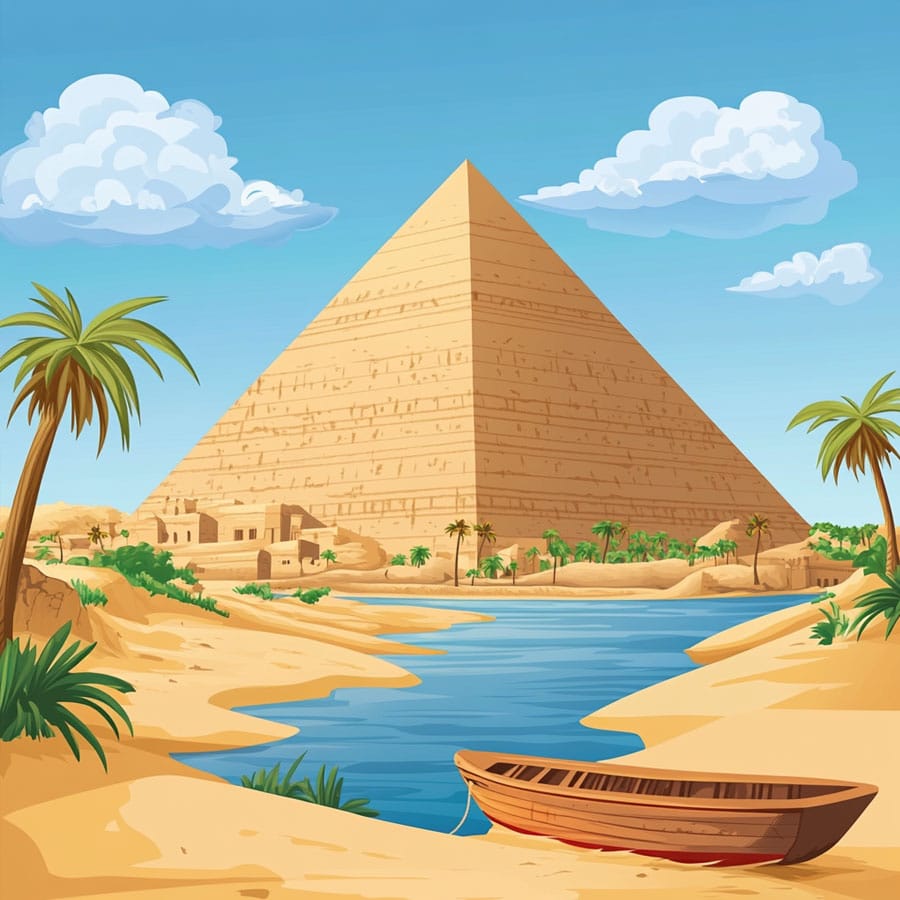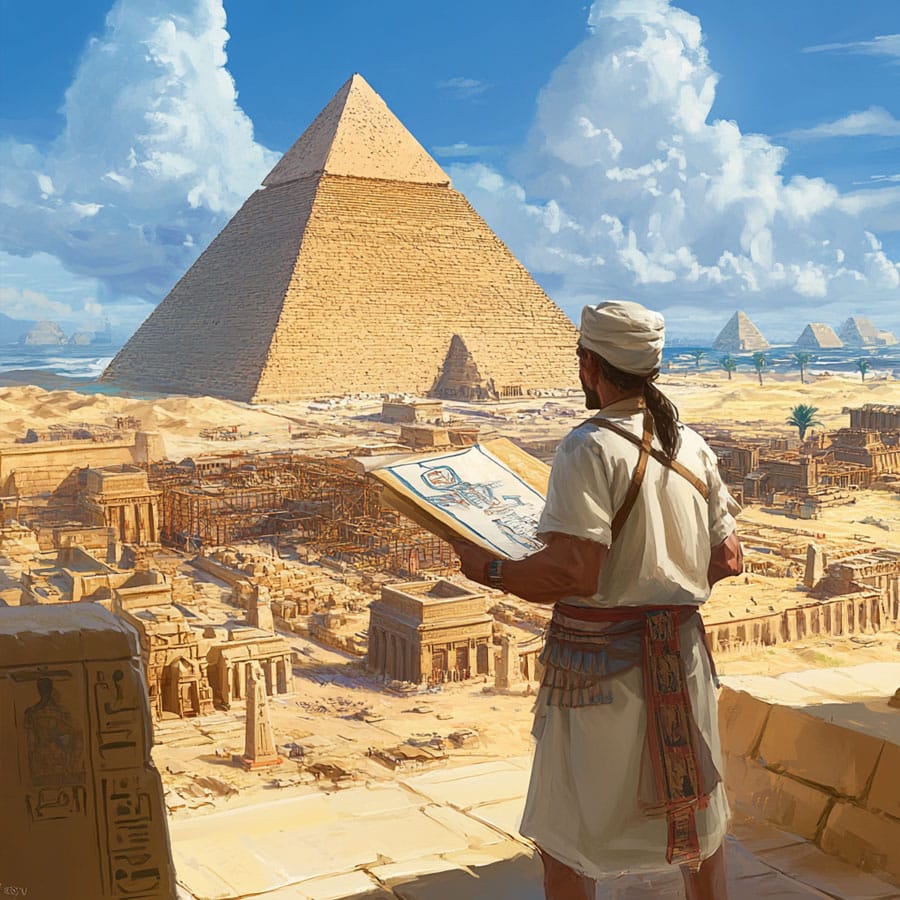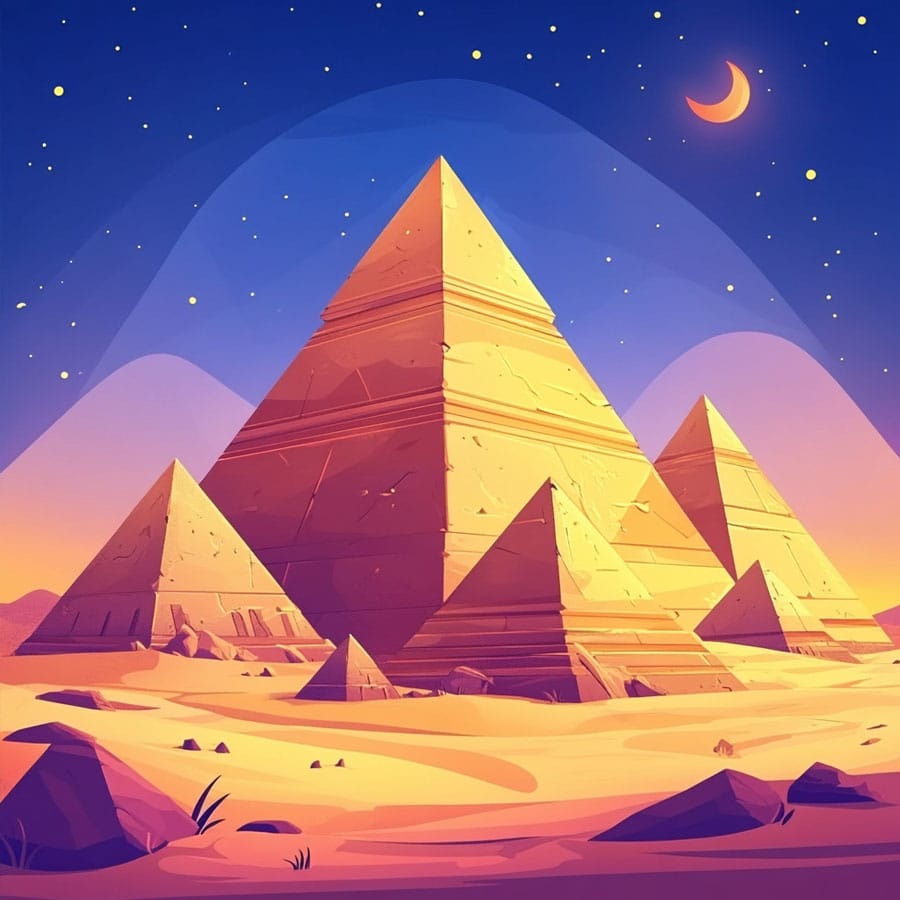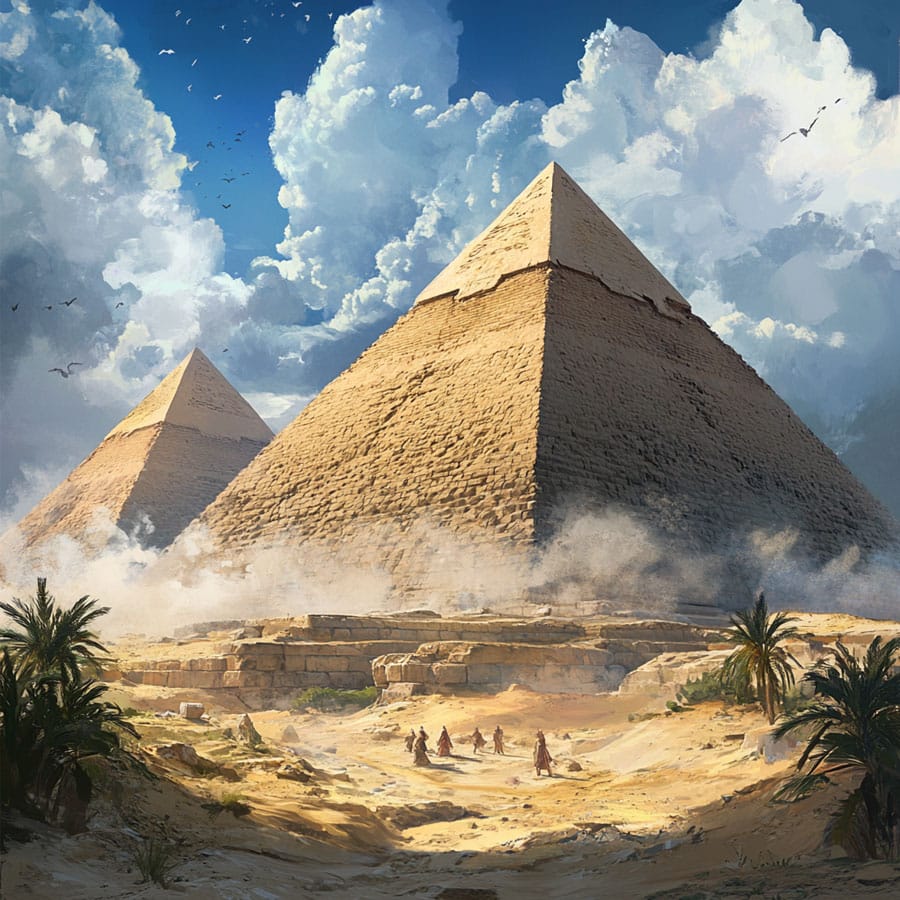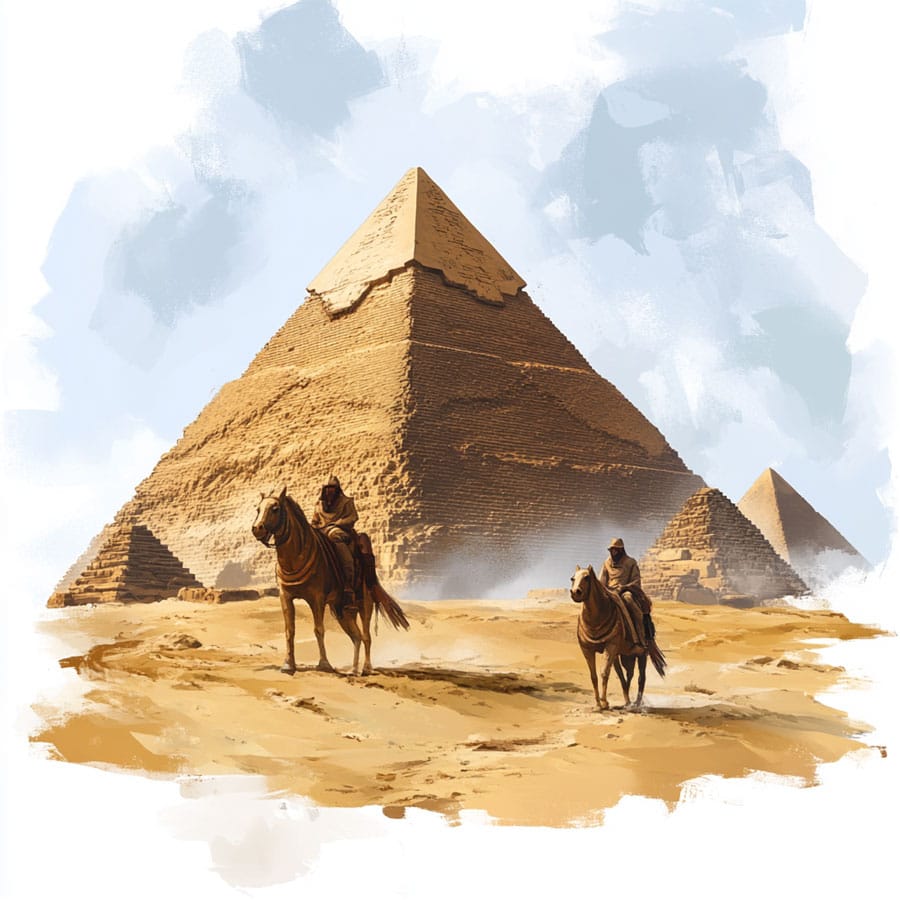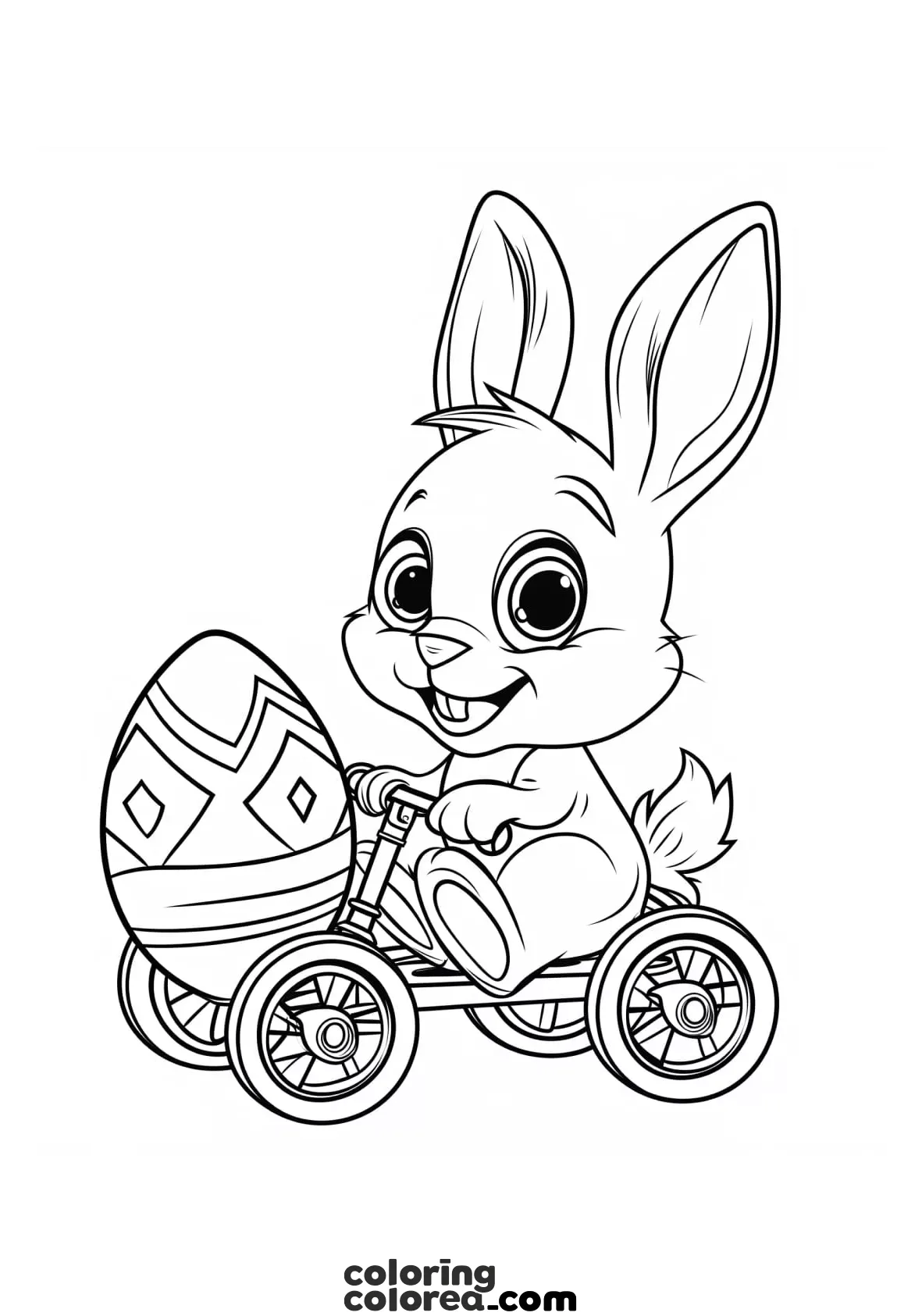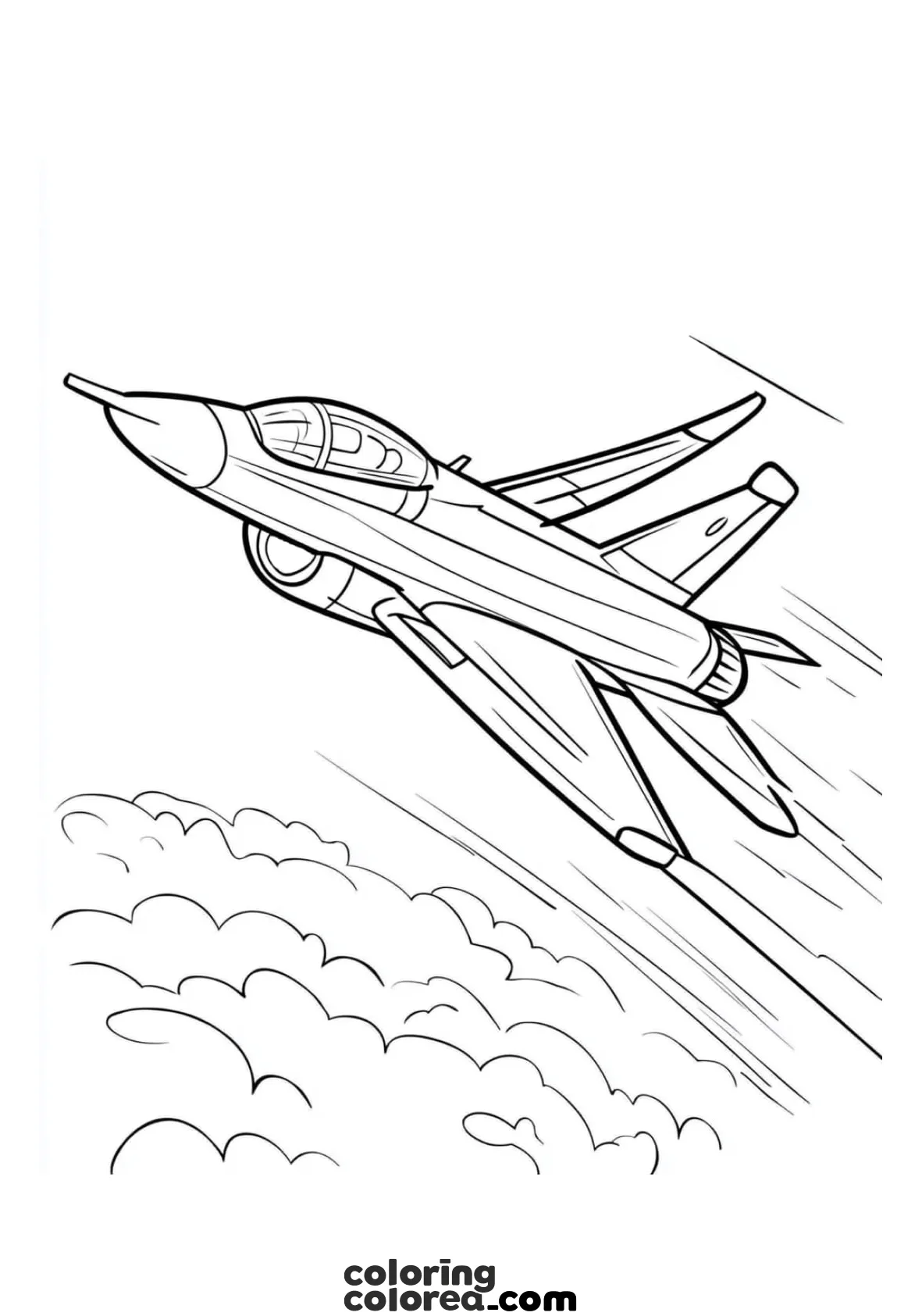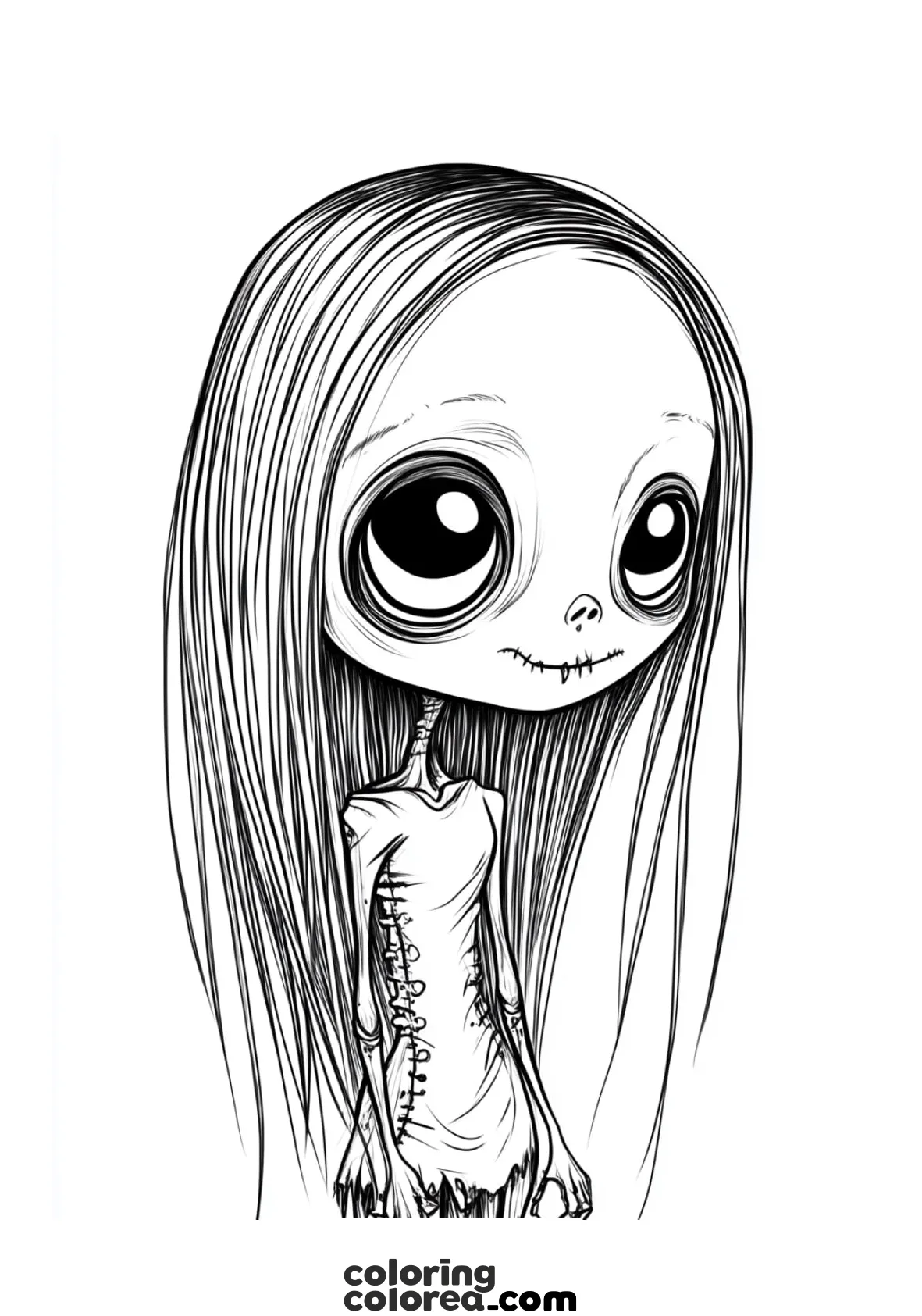Pyramid of Khufu (Great Pyramid): This is the largest and most famous pyramid, built for Pharaoh Khufu (or Cheops). At approximately 146 meters in height in its original construction, it was the tallest structure in the world for nearly 4,000 years.
Pyramid of Khafre: This pyramid appears taller than Khufu’s because it was built on higher ground, although it is slightly smaller. Khafre was the son of Khufu, and his pyramid is also impressive in size and complexity.
Pyramid of Menkaure: This is the smallest of the three great pyramids of Giza and was built for Pharaoh Menkaure, Khafre’s son. Although smaller in size, it remains imposing and was constructed with large stones.
The pyramids also hold spiritual symbolism. The triangular shape represented the rays of the sun, and according to Egyptian beliefs, it helped the pharaoh’s soul ascend to the heavens. Additionally, the Egyptians believed in life after death, and these tombs served as places to protect the pharaoh on his journey to the beyond.
How to Color the Drawing of the Egyptian Pyramids
To color this image, you can follow these suggestions to bring the scene to life:
• Pyramids: Use sand or beige tones for the pyramids, with brown or orange shading to add depth and highlight the stone texture. This will give them a realistic, ancient look.
• Sky and Sun: The sky can be colored light blue to represent a sunny day in the desert. For the sun, use yellow and some orange tones around it to create a warm effect.
• Clouds: You can leave the clouds white or color them lightly with shades of light grey for a soft, natural touch.
• Palm Trees and Vegetation: Use greens for the leaves of the palm trees and plants around the pyramids. You can add shades of green to create contrast and a more vibrant look.
• Ground and Sand: The desert sand can be colored with beige and light brown tones, mimicking the characteristic color of the Sahara and the arid environment around the pyramids.



